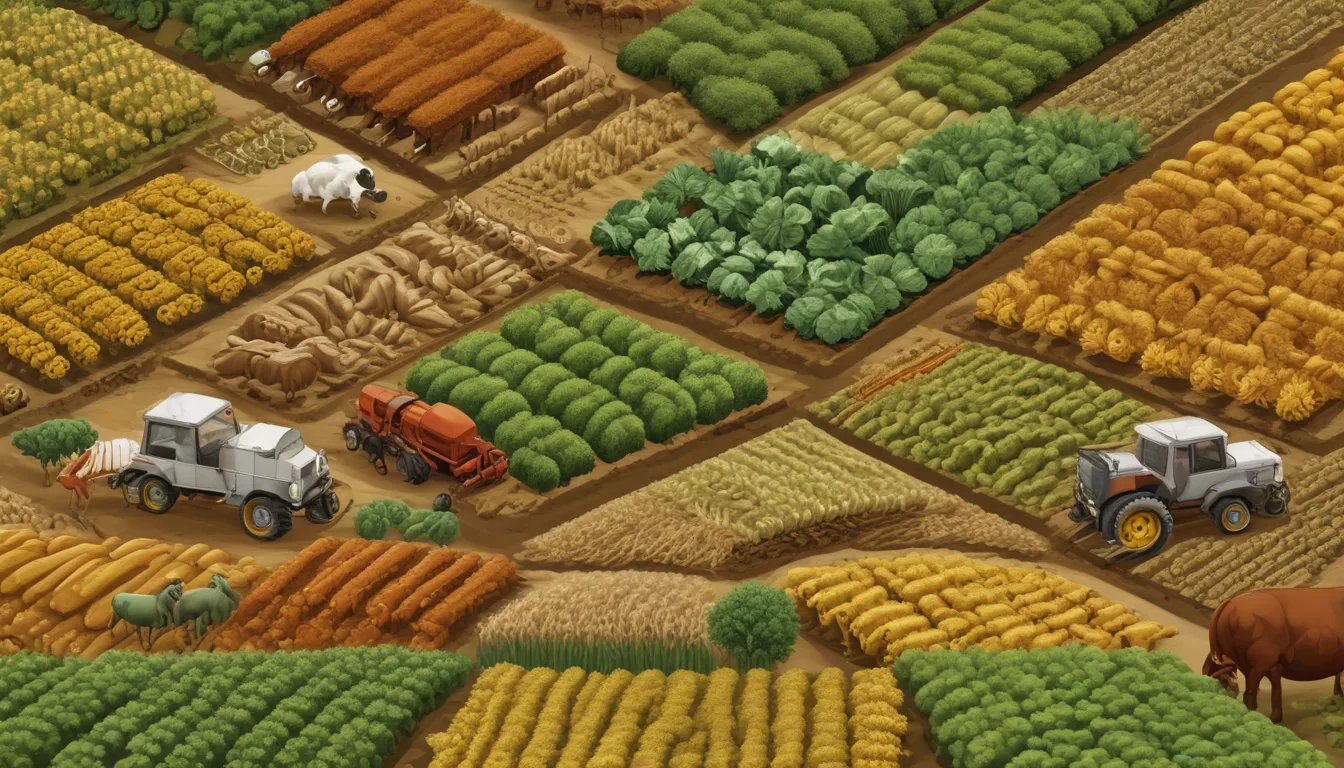A Note About Images: The images used in our articles are for illustration purposes only and may not exactly match the content. They are meant to engage readers, but the text should be relied upon for accurate information.
Intrigued by the world of agriculture? Delve into the fascinating realm of agricultural patterns to uncover mind-boggling information that will leave you in awe of farming’s wonders! Whether you are a farmer, a geography enthusiast, or simply curious about the world around you, there are numerous unbelievable facts about agricultural patterns that will astound you. From ancient farming techniques to modern advancements in precision agriculture, agriculture plays a crucial role in shaping our landscapes, providing sustenance, and contributing to the global economy.
Key Takeaways:
- Crop circles are not made by humans, and the Great Green Wall of Africa helps fight desertification and supports local communities.
- Ancient crop rotation, modern technology, and traditional farming practices all play a role in shaping agricultural patterns worldwide.
Unveiling the Mysteries: Crop Circles and the Great Green Wall
Crop Circles: Nature’s Intricate Designs
Crop circles, with their complex geometric designs, have long puzzled scientists and researchers. Contrary to popular belief, these intricate patterns are not created by humans. Some speculate that they are the result of natural phenomena such as plasma vortices or magnetic fields, while others believe they may be created by extraterrestrial beings. The mystery behind crop circles continues to captivate the imagination of many.
The Great Green Wall of Africa: Nature’s Shield Against Desertification
Stretching across the Sahel region, from Senegal to Djibouti, the Great Green Wall of Africa is an ambitious project that combats desertification and promotes sustainable agricultural practices. This ecological wonder consists of a belt of trees and vegetation that helps prevent soil erosion, promote biodiversity, and provide livelihood opportunities for local communities. It stands as a symbol of Africa’s commitment to sustainable development and environmental preservation.
Ancient Wisdom and Modern Innovations: Shaping Agricultural Patterns
Ancient Crop Rotation Techniques: Sustaining Agricultural Productivity
Ancient civilizations such as the Mayans and ancient Egyptians relied on crop rotation to sustain their agricultural productivity for centuries. This technique involves planting different crops in a specific sequence to maximize soil fertility, reduce the risk of pests and diseases, and ensure sustainable agricultural practices. The wisdom of ancient crop rotation techniques continues to influence modern farming practices to this day.
Climate Change: Affecting Agricultural Patterns Worldwide
The impact of climate change on agricultural patterns is profound. Rising temperatures, altered precipitation patterns, and extreme weather events pose significant challenges to farming communities globally. Farmers must adapt their crop choices, irrigation methods, and cultivation techniques to mitigate the effects of climate change, ensuring food security and environmental sustainability.
Embracing Technological Advancements: Revolutionizing Agriculture
The Role of Technology in Modern Agriculture
Technological advancements have revolutionized agriculture in recent years. Precision farming techniques, the use of drones, and satellite imagery have empowered farmers to monitor crop health, optimize irrigation practices, and increase productivity. These advancements play a crucial role in shaping modern agricultural patterns and promoting sustainable farming practices.
Terraced Farming: Cultivating Steep Slopes with Innovation
In mountainous regions, terraced farming is a remarkable agricultural pattern that allows farmers to cultivate steep slopes effectively. By creating terraces or steps along the inclines, farmers prevent soil erosion, retain water, and create suitable conditions for crop growth. This ancient practice, still widely used in countries like China, Peru, and the Philippines, showcases the ingenuity and resilience of agricultural communities.
Innovations for a Sustainable Future: Aquaponics and Agroforestry
Aquaponics: Maximizing Food Production Sustainably
Aquaponics, an innovative agricultural system, combines aquaculture (fish farming) and hydroponics (soilless plant cultivation) in a symbiotic relationship. Fish waste provides essential nutrients for plants, while plants filter and purify water for fish. This closed-loop system maximizes food production, conserves water, and minimizes the need for chemical fertilizers, promoting sustainability in agriculture.
Agroforestry: Integrating Trees, Crops, and Sustainability
Agroforestry, a sustainable farming technique, integrates trees, shrubs, and crops on the same land to improve soil fertility, reduce erosion, and enhance biodiversity. Farmers can generate additional income from timber production or non-timber forest products, demonstrating the multifaceted benefits of agroforestry in maintaining productive and environmentally friendly agricultural patterns.
Navigating Challenges and Preserving Traditions: Industrialization and Traditional Farming Practices
The Impact of Industrialization on Agriculture
Industrialization has reshaped agricultural patterns globally, leading to changes in land use, mechanization, and the use of synthetic inputs. While industrial agriculture has increased food production, concerns about its environmental impact and sustainability persist. Balancing productivity with environmental stewardship is essential for the future of agriculture.
Preserving Agricultural Patterns Through Tradition
Traditional farming practices, rooted in wisdom passed down through generations, play a vital role in preserving agricultural patterns and cultural heritage. Indigenous methods such as terrace farming and community-based crop diversity contribute to biodiversity conservation, sustainable agriculture, and resilience in the face of changing climates. Balancing tradition with innovation is key to preserving agricultural patterns for future generations.
Conclusion: Embracing Diversity and Sustainability in Agriculture
Exploring the diverse world of agricultural patterns reveals a tapestry of fascinating facts that showcase the ingenuity and resilience of farmers worldwide. From ancient wisdom to modern innovations, agriculture continues to shape societies, economies, and landscapes. By understanding and appreciating agricultural patterns, we gain insights into the interconnectedness between agriculture, biodiversity, and sustainable development, paving the way for a future where food security and environmental sustainability are paramount.
FAQs: Answering Your Agricultural Questions
-
How do agricultural patterns differ from region to region?
Agricultural patterns vary based on climate, geography, culture, and technology, resulting in diverse practices worldwide. -
What are sustainable agricultural practices?
Sustainable practices include organic farming, crop rotation, agroforestry, and integrated pest management, aiming to minimize environmental impact and promote biodiversity. -
How does climate change affect agricultural patterns?
Climate change impacts temperature, rainfall, and extreme events, requiring farmers to adapt techniques and crops to changing conditions. -
How do modern technologies influence agricultural patterns?
Modern technologies like precision farming and drones revolutionize agriculture, enabling farmers to monitor crops and maximize productivity. -
Which countries have the most diverse agricultural patterns?
Countries like India, China, Brazil, and the United States exhibit diverse agricultural practices due to varied climates and farming systems.
Our commitment to delivering trustworthy and engaging content ensures that each fact shared is credible and fascinating. Explore the world of agriculture with us and gain insights into the wonders of agricultural patterns.






